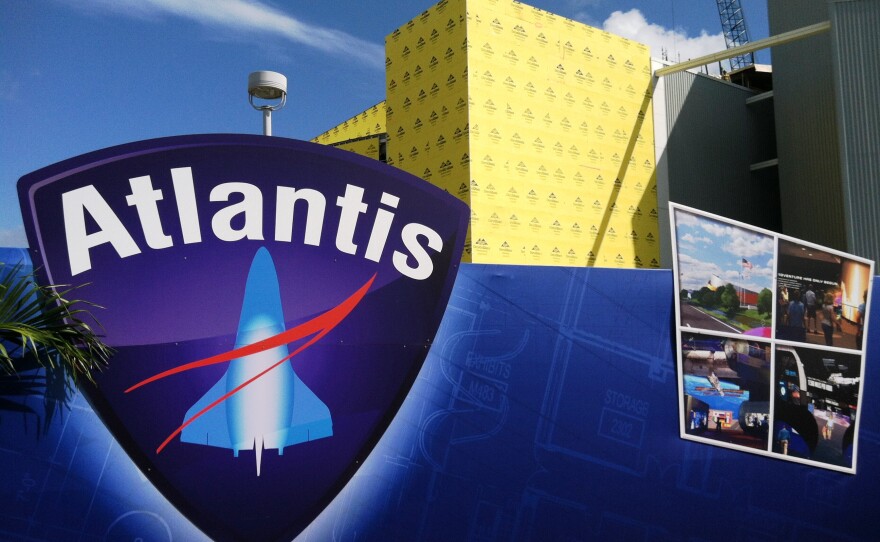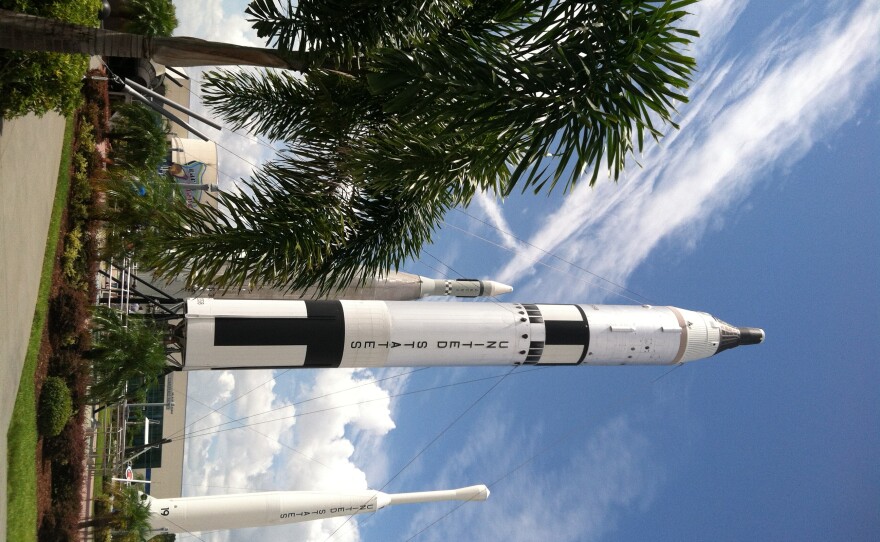They are ingrained in American history as the launching point for our manned missions to space. And now - for the first time ever - you don't have to be a rocket scientist to get close to the places where the space shuttle and Apollo missions left the Earth. We take a new tour of the Kennedy Space Center.
It's a place most of us have only seen on television - the "bubble room," which looks out from the Launch Control Center toward the distant launch pad. And for the first time in 40 years, you too can sit in the launch director's chair. Space Center spokeswoman Andrea Farmer starts our tour.
"Today, we're going to begin at the Launch Control Center. And that's where you have a big red button - except you won't see a big red button. This is where the launch director sits. This is where it all boils down to on launch day.
"Gather around, look around. Even though the people who work here are not behind their consoles right now, you can definitely feel the energy in this room," says Rob English.
English has lived on what is now called the "Space Coast" since 1956 - two years before NASA was a gleam in the eye of the federal government. After a long engineering tour here, he's now giving his own tours.
"I've have people with tears in their eyes - I can't believe it, I've seen it on television, I can't believe that I'm actually standing here," he says. "It is an amazing place, when you think of the history that's gone on here. And this is the future - this is the future."
Inside the "bubble room," English points to the console where all those T-minuses were counted down to zero. English tells a little boy in our tour group to push a big button near the console. What we hear is one of those instantly recognizable sounds that only came from one place: right here.
(Sound of the final launch of the space shuttle Atlantis last year.)
Atlantis now sits inside the massive Vehicle Assembly Building, where the shuttle and Apollo rockets were assembled. Its wings and and nose are scraped and scuffed, the thermal tiles that line its belly are discolored and worn. It's an added bonus on one of three separate tours being offered for the next several months.
Farmer says it's staying in the VAB until a new home can be built for it at the visitor center. Around the end of the year, it will be put on display on a 45-degree angle, attached to its rocket boosters.
"The guests could spend a few hours exploring, seeing space shuttle Atlantis up close," she says, "so close that you could almost touch the wing of Atlantis."
Farmer then leads us onto the Saturn Causeway - the path to the launch pad.
"This is the first time we've been able to take people out to the launch pad in the 50-year history of the Kennedy Space Center," she says. "And I can't tell you how many times guests have said, boy, I wish I could just get in there and get a little closer. And you can."
Now, we're standing a launch pad 39A. The structure hasn't changed much since when the last shuttle took off about a year ago. We're standing about a quarter mile from the launch pad. It's about as close as anyone's ever going to get who doesn't have a NASA badge. This part of the tour lets people get a lot closer than they ever could before.
Farmer says there's a good reason for this new openness.
"We're able to do this in between the end of the space shuttle program and the beginning of the space launch system and the commercial program," she says. "So it's a window of opportunity that is limited, it's rare access that we can make available to the public."
That oncoming commercialization of space travel was on the mind of shuttle astronaut Bob Springer, who now gives speeches for NASA in his spare time.
"We're getting competition. Competition spurs the cost saving, the development, the new technology," he says, "and I think it'll happen faster because of private enterprise than it will with the government system."
When asked if he has any sadness over the retirement of the shuttles, Springer says "Absolutely. I so enjoyed 30 years of - despite the accidents and all that, it was a fantastic program - unparalleled in history - and yeah, I shed a tear when Atlantis landed for that last time."
And now, you can take part in these tours unparalleled in NASA's recent history - through the end of the year.


































